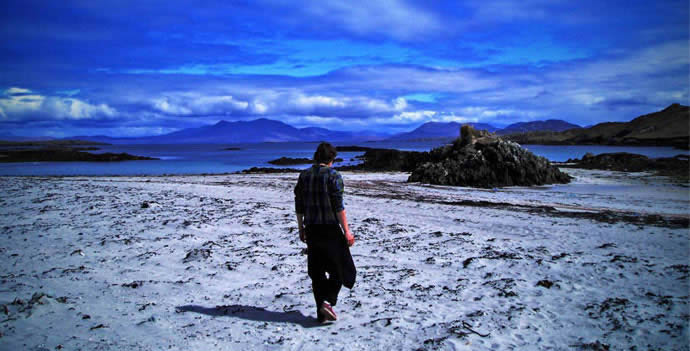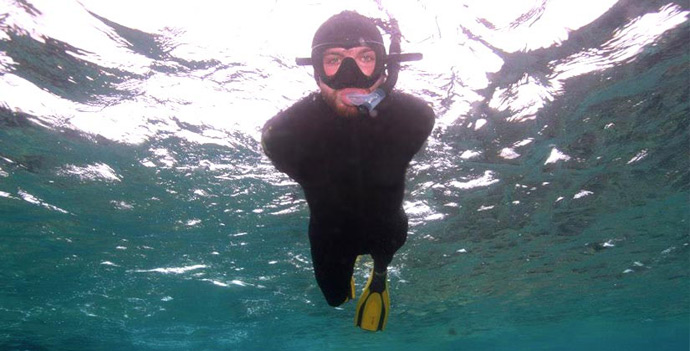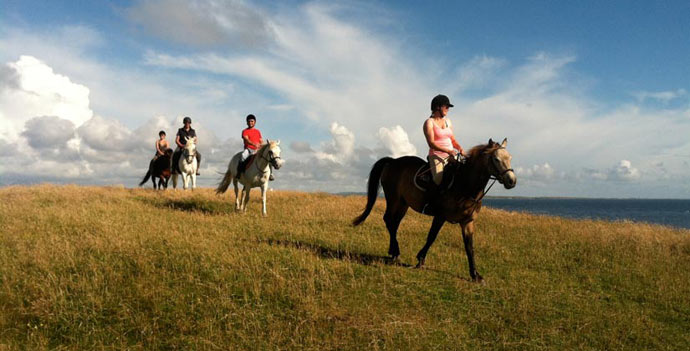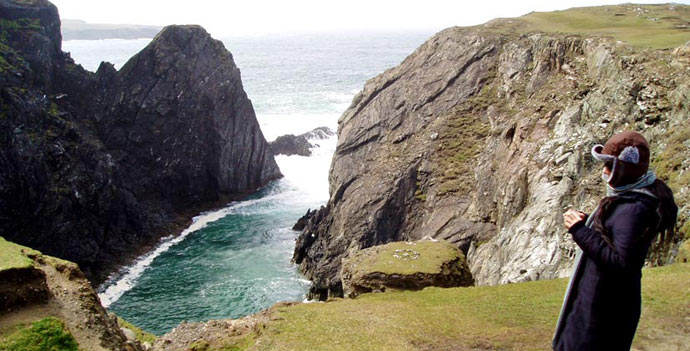Walking
Although Inishbofin is just 5.5km long by 3km wide, it contains four peninsulae, each of which is a spectacular costal walk. Interesting coves, sea stacks and blow holes, as well as bird and seal colonies are among the attractions here. The internal walks along Bofin's 10km of road are varied and interesting, with a number of lakes providing an added attraction. Remember to leave gates as you found them and avoid damaging dry-stone walls.
Cycling
There is a bicycle hire at two locations: beside the pier and next to the hostel. Cycling is a great way to see the island's scenery.
Bird watching
Inishbofin is a haven for wildlife. It is a breeding ground for many irish birds including lapwings, terns, skylarks and choughs. The corncrake is one of the rarer birds that can be seen here as it has survived due to the farming methods on the island. The mourning dove was spotted on Inishbofin a few years ago which was a very rare event.
Seal Colony
The island has a great variety of interesting sea, bird and plant life. It is a breeding ground for both the grey and the common seal.
Sea Angling
Inishbofin is a great place for fishing, both onshore and offshore. There are several locations on the island that are good for fishing off the rocks where you can expect to catch mackerel and pollock. For those who want the deep sea experience a boat can be chartered out for a few hours or for the full day: Bofin Angling
Diving
For the more adventurous there is a diving school on the island. The waters surrounding Inishbofin are crystal clear and give excellent visibility for diving. Island West dive school operates daily trips and training up to the full PADI certificate. More information here: Island West
Geocaching
There are several geocaches present on the island. See if you can find all of them! Here's a link to get you started: Geocaching Inishbofin
Heritage Museum
Visit the Inishbofin Heritage Museum and get a taste of island life in days gone by. The museum boasts a huge collection of old photographs, tools, pottery as well as a detailed history of the island.
St. Colman's Monastic Ruin
Inishbofin is first mentioned in the ancient annals when a monastic centre was founded here by St. Colman, bishop of Lindisfarne in the 17th century. All traces of this settlement have now disappeared, but the ruins of St. Colman's Abbey, a medieval church, are said to mark the site.
Cromwellian Fort
Built in 1657, the fort was used as a prison for bishops, priests and monks before they were transported to the American colonies. The fort is situated at the entrance to Inishbofin's beautiful natural harbour, now very popular with international sailing enthusiasts.
Farmer's Market
Visit the local market where you can purchase a wide variety of local produce, organic vegetables, lobster, fish & crafts.
Entertainment
Irish music has always enjoyed a special place in the everyday life of Inishbofin and you are guaranteed excellent sessions any time you visit.
What should I bring?
- Rain wear
- Walking shoes
- A warm sweater
- Flashlight
- Reading materials
- Your own medicines(There is no pharmacy on the island)
- Money (There is no ATM on the island)

Take a stroll

Go for a dip

Discover the island

Find the corncrake
